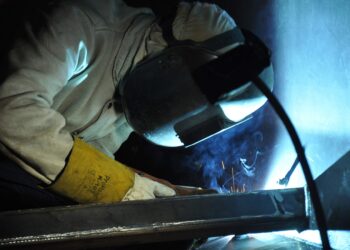In the realm of military aviation within Central Eastern Europe (CEE), a significant shift is underway with the adoption of fifth-generation fighter aircraft. These state-of-the-art planes, boasting advanced stealth capabilities, sophisticated avionics, and enhanced sensor systems, represent a leap forward in air combat technology for the region’s armed forces. The integration of these aircraft is a response to evolving security challenges and a reflection of the broader global trend towards modernising and strengthening air power.
The fifth-generation fighter jets, such as the F-35 Lightning II, are characterised by their stealth technology, which allows them to evade radar detection, providing a significant tactical advantage in aerial combat. This stealth capability is complemented by advanced avionics systems that enable superior situational awareness. The aircraft are equipped with integrated sensor packages, which provide pilots with a comprehensive view of the battle space, enhancing their ability to make informed decisions quickly.
For CEE nations, the acquisition of these aircraft is not just about enhancing their air combat capabilities; it’s also about aligning with NATO standards and ensuring interoperability with allied forces. Poland’s decision to purchase F-35 fighters is a case in point. These jets are expected to replace older, less capable aircraft, bringing Poland’s air force in line with the advanced capabilities of its NATO allies.
However, the integration of fifth-generation fighters into CEE’s military infrastructure is not without its challenges. The high cost of these aircraft is a significant consideration, particularly for countries in the region with limited defence budgets. Additionally, the integration of these advanced fighters requires substantial investment in support infrastructure, including maintenance facilities and training programs for pilots and technicians.
Moreover, there are strategic implications to consider. The deployment of these advanced aircraft by CEE nations is likely to be closely watched by neighbouring countries and could potentially alter the regional security dynamics. The presence of fifth-generation fighters in the region’s air forces can serve as a deterrent, but it also raises questions about arms race escalation.
Despite these challenges, the integration of fifth-generation fighter aircraft in CEE is a clear indicator of the region’s commitment to upgrading its military capabilities and enhancing its defence posture. As these countries continue to navigate the complex landscape of international security, the role of advanced military technology, exemplified by these state-of-the-art fighters, will be crucial in ensuring their sovereignty and collective defence objectives.
The move towards fifth-generation fighters in CEE reflects a broader trend in military modernization and is a critical step in maintaining regional stability and security. As the global security environment continues to evolve, the adoption of these advanced aircraft will undoubtedly play a pivotal role in shaping the future of air power in Central Eastern Europe.






